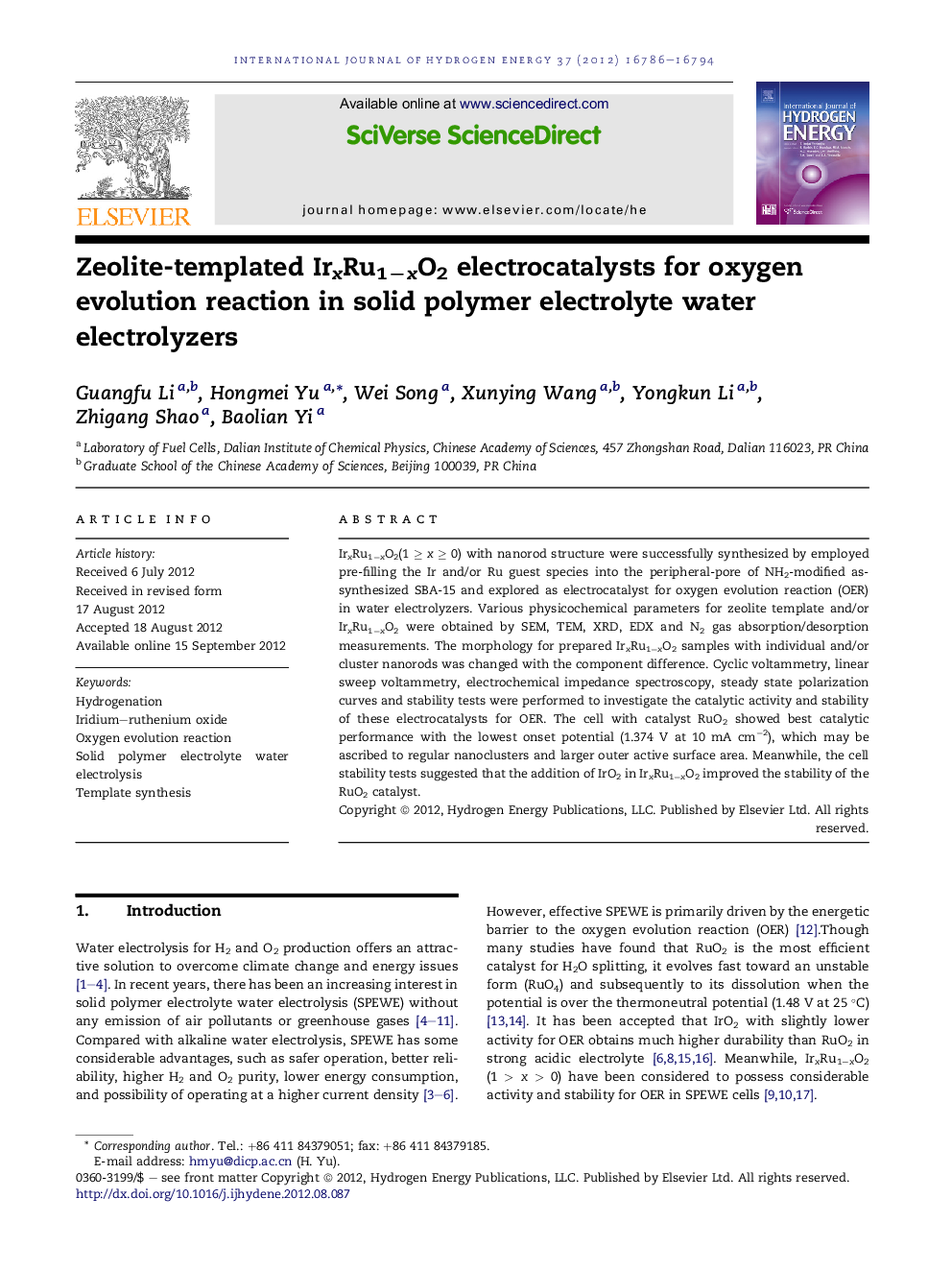| Article ID | Journal | Published Year | Pages | File Type |
|---|---|---|---|---|
| 1270858 | International Journal of Hydrogen Energy | 2012 | 9 Pages |
IrxRu1−xO2(1 ≥ x ≥ 0) with nanorod structure were successfully synthesized by employed pre-filling the Ir and/or Ru guest species into the peripheral-pore of NH2-modified as-synthesized SBA-15 and explored as electrocatalyst for oxygen evolution reaction (OER) in water electrolyzers. Various physicochemical parameters for zeolite template and/or IrxRu1−xO2 were obtained by SEM, TEM, XRD, EDX and N2 gas absorption/desorption measurements. The morphology for prepared IrxRu1−xO2 samples with individual and/or cluster nanorods was changed with the component difference. Cyclic voltammetry, linear sweep voltammetry, electrochemical impedance spectroscopy, steady state polarization curves and stability tests were performed to investigate the catalytic activity and stability of these electrocatalysts for OER. The cell with catalyst RuO2 showed best catalytic performance with the lowest onset potential (1.374 V at 10 mA cm−2), which may be ascribed to regular nanoclusters and larger outer active surface area. Meanwhile, the cell stability tests suggested that the addition of IrO2 in IrxRu1−xO2 improved the stability of the RuO2 catalyst.
Graphical abstractFigure optionsDownload full-size imageDownload as PowerPoint slideHighlights► IrxRu1−xO2 nanorods are successfully synthesized by a zeolite-template method. ► Zeolite-template method has obvious advantage for good morphology control. ► RuO2 shows excellent catalytic activity for oxygen evolution reaction. ► IrO2 addition in IrxRu1−xO2 improves the electrochemical stability of RuO2.
